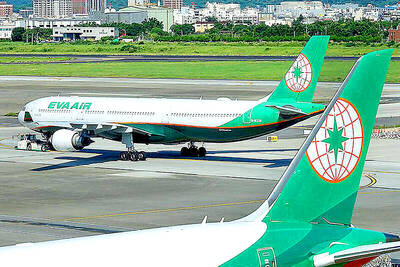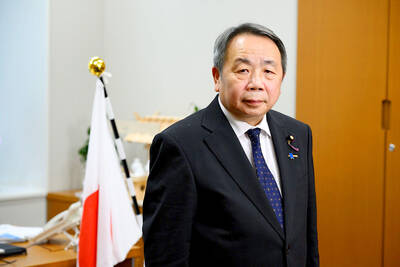The Taiwanese people have worked too hard, and over 75 percent of the respondents in a survey think that they have excessive workloads, the local media reported yesterday.
According to the results of the survey -- jointly conducted by CHEERS magazine and the udnjob.com Web site between Aug. 7 and 13 -- almost 30 percent of the 1,383 respondents work more than 62 hours a week on average.
Their real working hours are about 20 hours a week more than the regular hours stipulated by the government.
In other words, the respondents work an average of four hours overtime every day.
The results of the survey also show that as many as one fourth of the Taiwanese people often need to work overtime on weekends or holidays.
Some answered that they work longer in order to improve their competitiveness as well as to learn new skills, while others said that they work overtime due to their fear of being laid off.
Meanwhile, the survey challenges the credibility of the government's labor report, which was published by the Cabinet's Council of Labor Affairs last July.
According to the report, only 11.3 percent of Taiwan's enterprises expected their employees to work overtime.
The report concluded that the Taiwanese people work an average of 5.32 hours of overtime a week (about one hour a day) -- which is obviously very far removed from the real situation, according to the survey yesterday.
The survey conductors say that the government has ignored the fact that many Taiwanese people often take their work home, and therefore underestimated the amount of extra hours people work.
According to the survey results, those in the research and development field work the longest hours.
As many as 42.9 percent of them work over 20 hours of overtime a week, and about 20.3 percent of them work more than 30 hours extra a week.
The results of the survey tally with a report published by the International Institute for Management Development last year.
According to the institute's annual World Competitiveness Yearbook, the Taiwanese people work the longest hours in the world, with an average of about 2,282 working hours a year.
This number is much higher than that of other economies analyzed, which work an average of 1,925 hours per year. In other words, the Taiwanese people annually work 357 more hours than other people.

A strong continental cold air mass is to bring pollutants to Taiwan from tomorrow, the Ministry of Environment said today, as it issued an “orange” air quality alert for most of the country. All of Taiwan except for Hualien and Taitung counties is to be under an “orange” air quality alert tomorrow, indicating air quality that is unhealthy for sensitive groups. In China, areas from Shandong to Shanghai have been enveloped in haze since Saturday, the ministry said in a news release. Yesterday, hourly concentrations of PM2.5 in these areas ranged from 65 to 160 micrograms per cubic meter (mg/m³), and pollutants were

Taiwan’s armed forces have established response protocols for a wide range of sudden contingencies, including the “Wan Chun Plan” to protect the head of state, the Ministry of Defense (MND) said today. After US President Donald Trump on Saturday launched a series of airstrikes in Venezuela and kidnapped Venezuelan President Nicolas Maduro, concerns have been raised as to whether China would launch a similar “decapitation strike” on Taiwan. The armed forces regularly coordinate with relevant agencies and practice drills to ensure preparedness for a wide range of scenarios, Vice Minister of National Defense Hsu Szu-chien (徐斯儉) told reporters before a

EVA Airways on Saturday said that it had suspended a pilot and opened an investigation after he allegedly lost his temper and punched the first officer several times as their plane was taxiing before takeoff at Los Angeles International Airport. According to a report published on Thursday by The Reporter, the incident occurred after the flight’s Malaysian first officer tried to warn the Taiwanese pilot, surnamed Wen (文), that he was taxiing faster than the speed limit of 30 knots (55.6kph). After alerting the pilot several times without response, the first officer manually applied the brakes in accordance with standard operating

Japanese Councilor Hei Seki (石平) on Wednesday said that he plans to visit Taiwan, saying that would “prove that Taiwan is an independent country and does not belong to China.” Seki, a member of the Japan Innovation Party, was born in Chengdu in China’s Sichuan Province and became a naturalized Japanese in 2007. He was elected to the House of Concilors last year. His views on the Chinese Communist Party (CCP) — espoused in a series of books on politics and history — prompted Beijing to sanction him, including barring Seki from traveling to China. Seki wrote on X that he intends